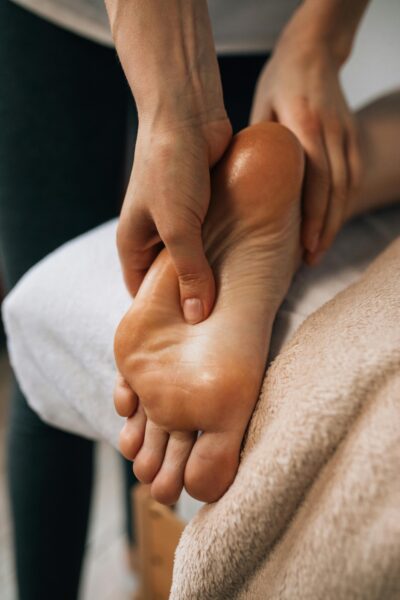How Acupuncture Channels (Meridians) Work: A Guide to Distal Acupuncture and Healing
Acupuncture channels—also called meridians—are pathways in the body that circulate Qi (energy), blood, and fluids. While the idea of energy moving through invisible lines may sound abstract at first, in Traditional Chinese Medicine (TCM), these channels form a well-mapped, time-tested system used for thousands of years to promote healing and restore balance.
These channels connect organs, muscles, and body systems into a living network that links the body and mind—and even help us respond to the world around us.
Why Channels Matter in Acupuncture
Channel theory is at the heart of acupuncture. The points used in treatment lie along these channels, and each one can directly influence how the body functions.
Acupuncture channels support the body by:
- Circulating Qi and blood for healthy function and repair
- Protecting against external stressors like illness or environmental changes
- Helping the body respond and adapt to internal imbalances
- Directing healing energy to areas that are out of balance
How Channel-Based Acupuncture Works
There are twelve primary acupuncture channels, each connected to specific organs and body regions. These channels are paired and interconnected, which means a point in one area can affect another part of the body—often far from where symptoms show up.
For example, someone with low back pain might find relief through points in the hand or foot. This is the essence of distal acupuncture, a technique that allows effective treatment without touching the painful or injured area directly.
Dr. Richard Teh-Fu Tan, a pioneer of modern channel theory, put it simply:
“To turn on a ceiling light, you don’t screw in the lightbulb—you use the switch on the wall.”
Likewise, acupuncture often works best by stimulating points away from the area of discomfort.
Using Distal Points for Effective Treatment
By identifying where symptoms appear—such as back pain, shoulder stiffness, or digestive discomfort—we gain clues about which channels may be out of balance. Through careful observation and gentle palpation of key acupuncture points, we refine the diagnosis and choose the most effective treatment strategy.
This approach is especially useful after surgery or injury. For example, someone recovering from knee surgery may receive treatment on the opposite elbow or knee, which helps reduce pain and inflammation without disturbing the surgical site. It’s one reason we are often called to Boulder Community Health (BCH) to assist with post-surgical pain management. Since we’re treating away from the wound, there’s virtually no risk of infection.
Accessing Qi Through Acupuncture Points
Each acupuncture point along the channel system has a unique function. For example, Lung 5, located near the elbow, can help with:
- Coughing and wheezing
- Chest tightness
- Elbow or shoulder pain (on the opposite side)
- Knee pain
- Low back pain
This versatility demonstrates how interconnected the body is within Chinese medicine—and how one carefully selected point can support multiple concerns.
Why Channel Theory Still Matters
Despite being developed over 3,000 years ago, channel theory remains a relevant and effective system for treating modern health issues. Whether you’re seeking relief from pain, recovering from surgery, or managing chronic conditions, understanding how the meridians work can unlock new paths to healing.
Distal and Local Acupuncture in Boulder, Colorado
At the Acupuncture Clinic of Boulder, we specialize in both local acupuncture (also called musculoskeletal acupuncture or Dry Needling) and distal acupuncture, depending on your needs.
Whether you’re completely new to acupuncture or returning for continued care, we’re here to help relieve pain, reduce stress, and support your long-term health—naturally and holistically.
📞 Call us today at (303) 665-5515
💻 Or book online: acuboulder.com


